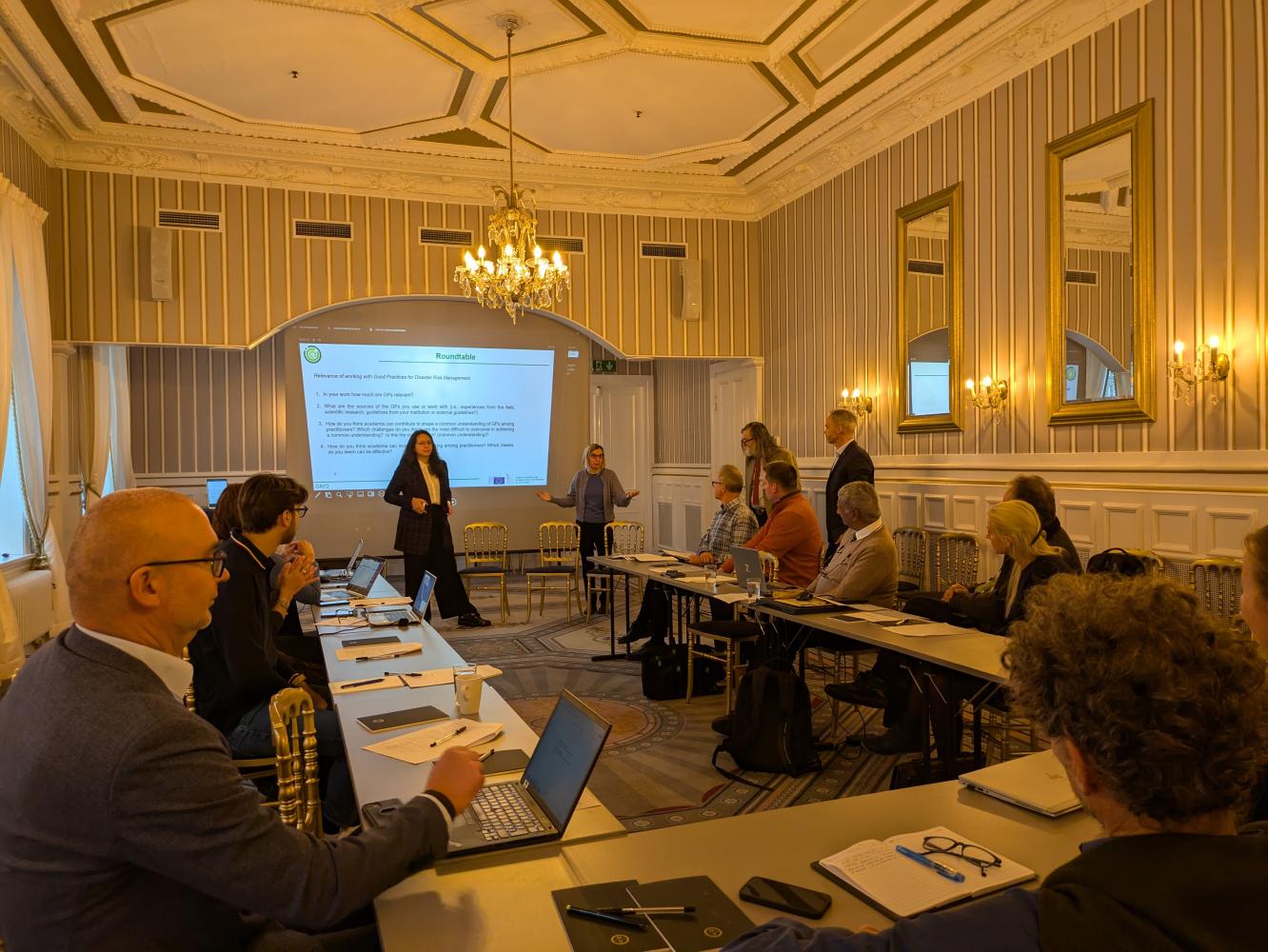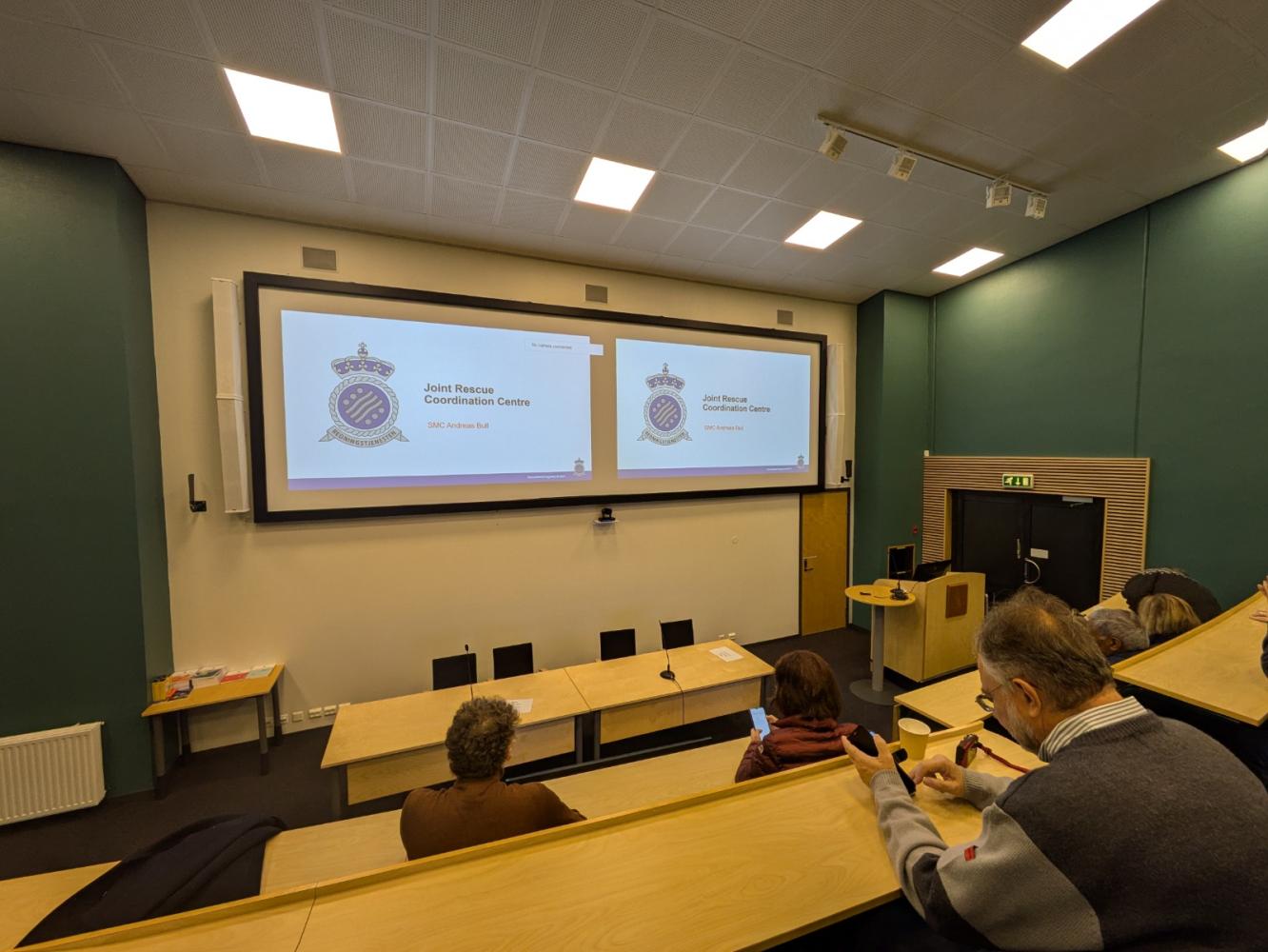Introduction
The second ROADMAP2 Collaborative Workshop, held in Stavanger, Norway on 16-18 October, brought together ROADMAP2 consortium partners and ROADMAP2 CEO members to discuss and identify good practices in disaster risk management.
The main objective of the workshop was to promote disaster resilience in line with the European Union Disaster Resilience Goals (UDRG).
The workshop focused on three UDRGs:
Anticipate: improving risk assessment, anticipation and planning.
Prepare: increase risk awareness and preparedness of the population.
Respond: improving civil protection capacity at national and EU level.
Participants used the ROADMAP2 framework to identify and assess good practices related to each UDRG. The framework provided a structure for group discussions, knowledge sharing and identification of potential gaps or areas for improvement.
During the workshop, there were presentations, group discussions and a demonstration of how the good practices identified can be incorporated into the Solutions Explorer.
The workshop took place at the Hotel Victoria in Stavanger and included also a guided tour of the city and the Sola Joint Rescue Coordination Centre.
16 October - Day 1
The first day was dedicated to the arrival of participants and an internal meeting of the ROADMAP2 consortium.
Participants who arrived during the day or were already in Stavanger were able to take part in a guided tour of the city.
In the evening, the consortium partners met to discuss the progress of the project and the future of ROADMAP2. The meeting was followed by dinner.
17 October - Day 2
The day began with welcoming remarks from Daniela Di Bucci, ICPD project coordinator, and Claudia Morsut from the University of Stavanger.
Claudia Morsut then introduced the definition of ‘good practice’ adopted by ROADMAP2 and presented the three UDRGs on which the work would focus: Anticipate, Prepare and Respond.
Participants took part in a panel discussion on the "Relevance of working with best practices for Disaster Risk Management". Three members of the CEO: Lucia Castro Herrera - University of Agder Norway, Geir Ellingsen - DSB Norway and Marco Lombardi - Università Cattolica del Sacro Cuore, shared their experiences and reflections, moderated by Bjørn Ivar Kruke from the University of Stavanger.
The morning session concluded Stine Bjerga Haga from Stavanger Municipality's Preparedness Department presented good practices in climate change adaptation implemented in Stavanger Municipality, followed by a Q&A session.
In the afternoon Claudia Morsut introduced the ROADMAP2 framework, which was used by the participants during the followed activities.
After the introduction session participants were divided into three groups, each focusing on one of the three selected UDRGs. The afternoon activities included 2 rounds, so that each group shared their results with an other group.
Round 1: Each group received a package of materials including a description of the assigned UDRG, the ROADMAP2 definition of good practice, a template for documenting good practice and a completed good practice example. The groups, with the help of a moderator and a minute taker, were to identify and discuss good practices related to the assigned UDRG.
Round 2: The groups exchanged the work done in Round 1. The minute taker from each group presented the work done to the new group and the moderator stimulated the discussion.
Plenary discussion: The three groups met in plenary to share the results of the groups work and to discuss the challenges that emerged.
The day ended with a practical demonstration of how to enter the identified good practices into the 'Solutions Explorer', the web tool developed by ROADMAP2 to collect and share DRM solutions.
18 October - Day 3
The third and final day of the workshop included a visit to the Sola Joint Rescue Coordination Centre, located near Stavanger-Sola Airport.
During the meeting we were given a presentation on the activities and resources available at the Centre, followed by a tour of the operations room.


































